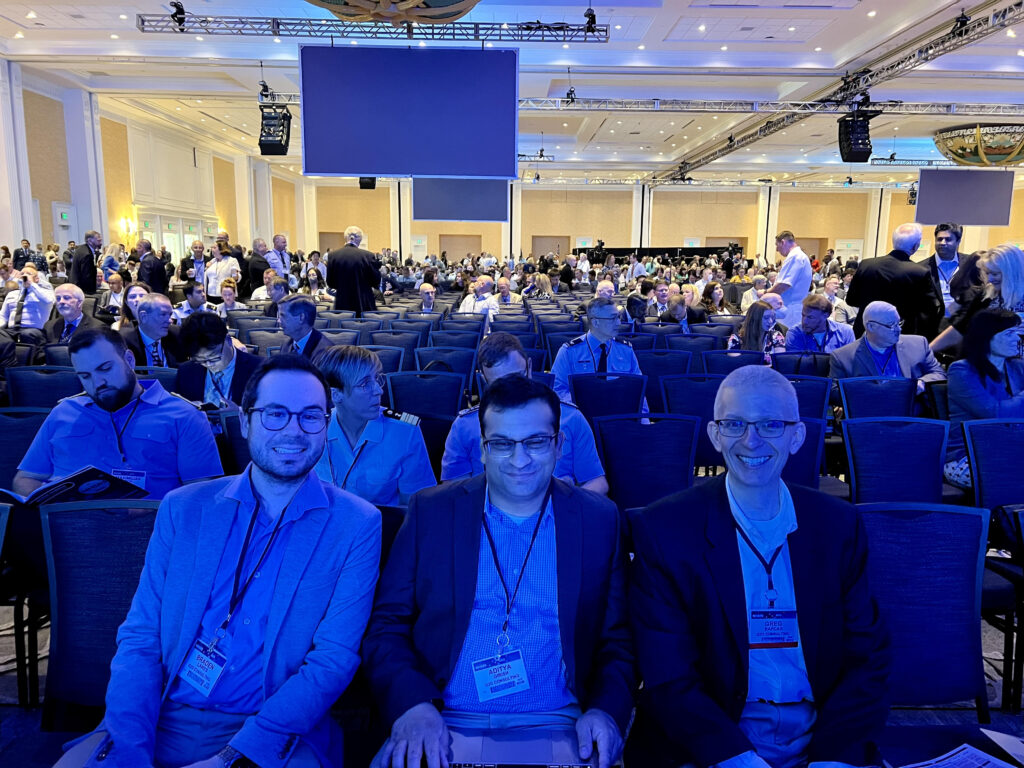MHSRS Daily Digest Day 1 – Monday, August 14
Each year, G2G attends the Military Health Systems Research Symposium (MHSRS) which brings together military, government, academia, and industry experts to share their latest research findings and challenges on topics, including combat casualty care, military operational medicine, clinical and rehabilitative medicine, medical simulation and information sciences, military infectious diseases, and the radiation health effects. For G2G, this is an opportunity to learn about what is most important to the Department of Defense (DoD) in military medicine to best position current and future clients to meet the needs of our Warfighters. It is also a fantastic networking opportunity to reconnect with and meet new key players in all branches and divisions of military medicine.
Day 1:
MHSRS kicked off today with remarks from Lester Martinez Lopez, MD, MPH, (Assistant Secretary of Defense for Health Affairs), followed by trauma care leaders within DoD. Lopez said there are three interrelated pillars for military medical to be effective: force readiness, medical force readiness that is clinical and operational, and care of beneficiaries. He said that physical health, mental health, and preventive medicine are all health. DoD has interest in expanding to ensure they are addressing those needs as well as family health and overall, DoD needs to work with industry and academia to support collaboration in research. Remarks from Major General Dr. Paul Fredrichs, MD (Director of the newly created Office of Pandemic Response Policy at the White House) touched on a variety of topics, including the importance of interpersonal interactions across the military health system, the erosion of trust in medicine/vaccinations due to rampant misinformation, and health sector/workforce resilience. Additionally, he called for boldness among the health sector and stated, “We cannot allow innovation to be stifled by regulation.”
The trauma team led by Terry Rauch, PhD (Acting Deputy Assistant Secretary of Defense for Health Readiness Policy and Oversight) and John Holcomb, MD (retired 2008 and former ISR Director) shared insights of what was learned in theater that applies to the Combat Casualty Care Research Program and operational medicine in Role 2 and 3 hospital care. They emphasized how hemorrhage is the #1 cause of death in Role 1 so they focus on saving lives in Role 2, and need good surgery to be done as far forward as possible to avoid death from hemorrhage. Finally, they discussed how documentation, experience, tools, and systems are key. Sometimes technology innovation is key but more often, just better coordination, communication and learning from the past is what saves lives.
Following the opening session, the G2G team had the chance to speak with various leaders within the Defense Health Agency, ranging from head of health affairs to head of logistics and acquisitions. We met with Seileen Mullen (Assistant Secretary of Defense for Health Affairs) and discussed how to ensure medical innovations are covered by TRICARE and accessible to service members and their families. We also talked about women’s health and sex-based studies and reporting to improve care for female service members and their families. In the afternoon, G2G attended a session on Artificial Intelligence (AI)/Machine Learning(ML) in military medicine. The Military Health System (MHS) will be following up on a 2018 systemwide survey of AI work that identified ~100 ongoing projects in this space. The intent is to identify outcomes from these projects and move forward initiatives relevant to DoD wide priorities in AI. Ongoing and future work at DoD includes using real time data capture to facilitate AI medical decision making in the field where MEDEVAC capabilities are limited and mining health record data for applications in precision medicine. The Veterans Health Administration has made some substantial strides in analytics of the data associated with the 22 million patients in its system. This is in part through the use of synthetic data sets that mimic the statistical properties of real patient data without compromising privacy. It was noted that these techniques would allow for data set enlargements. This would be beneficial for the study of rare conditions, where actual patient data sets are very small.
G2G also attended several other breakout sessions, including one on Female Warfighter Health & Performance, which provided an overview of the Military Women’s Health Research Program (MWHRP) and was established by the Uniformed Services University of the Health Sciences to allow for research and collaboration among active-duty service women and veterans. Another breakout session focused on Antimicrobial Countermeasures for Wound Infections in Military Personnel, which featured several studies on protecting service members from battlefield infections and included in-depth discussion on biofilms.
We ended the day with the Assistant Secretary of Defense for Health Affairs Reception and opening of the exhibit hall. G2G got to connect with CDMRP leadership and welcomed attendees to our booth #1206 (bbcETC-G2G booth) and enjoyed the opportunity to meet new emerging bioscience companies, reconnect with military leaders, and see all the amazing exhibits. Throughout the week, G2G is proud to have many clients presenting at this prestigious conference in breakout sessions and/or poster presentations.



